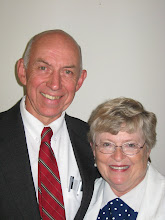
Wednesday, May 20, 2009
Have you ever heard of Gingee?

 The stonework is beyond my comprehension: the size of the single pieces, the precision of the cutting, the zillions of man-hours it must have taken. Walls are laid up without mortar (except that added later in clumsy repairs by Europeans) with fit that would make an Inca proud. Here are the eaves of the bathhouse surrounding the reservoir. One stone has broken, allowing a cross-sectional view. A root about 6” thick extends to the right over the lintel, with this complicated curved cross section of about 4” maximum thickness cantilevered outward. How do you cut that without breaking 90% of them in the process? As you see in the background, most of them are still there after centuries.
The stonework is beyond my comprehension: the size of the single pieces, the precision of the cutting, the zillions of man-hours it must have taken. Walls are laid up without mortar (except that added later in clumsy repairs by Europeans) with fit that would make an Inca proud. Here are the eaves of the bathhouse surrounding the reservoir. One stone has broken, allowing a cross-sectional view. A root about 6” thick extends to the right over the lintel, with this complicated curved cross section of about 4” maximum thickness cantilevered outward. How do you cut that without breaking 90% of them in the process? As you see in the background, most of them are still there after centuries.
Monday, May 18, 2009
Meet John


The word spread to nearby villages, and he now ministers to three congregations, and to provide for his wife and four children, works as a security guard at nearby Rising Star Outreach, a school for children from the leper colonies. (See http://www.risingstaroutreach.org/ for another mind-boggling story.)
When one of the Latter-day Saint volunteers at RSO told John about the modern restoration of the Church of Jesus Christ and gave him a copy of the Book of Mormon, he eagerly began to read. A third of the way through, things got busy and he put the book down for a couple of days. He was awakened in the night by a voice telling him, "Read the book of Alma". He looked in the Book of Mormon for the book of Alma, and found answers to many questions that had long troubled him.
After finishing the Book of Mormon he took up the Gospel Principles Sunday School manual and found out for himself the benefit of having modern living Apostles and Prophets. He excitedly pointed out to us Elder Boyd K. Packer's parable of the Unwise Debtor and exclaimed, "Now I can explain the doctrine of the Atonement in a way that people can understand it!" He is now using the Gospel Principles manual to teach in his church, and we are supplying him copies of the Book of Mormon in Tamil, though most of the villagers are not literate in either English or Tamil.

On the day of this photo, his sister (seated on his right, in red) who lives in Chennai, had been out in the countryside on business and on her way thought to drop in on her brother while we were there. Within an hour's discussion she told her brother, "God delayed my return to the city so I could hear this. You need to be teaching us every week out of this Book of Mormon."
(to be continued)























